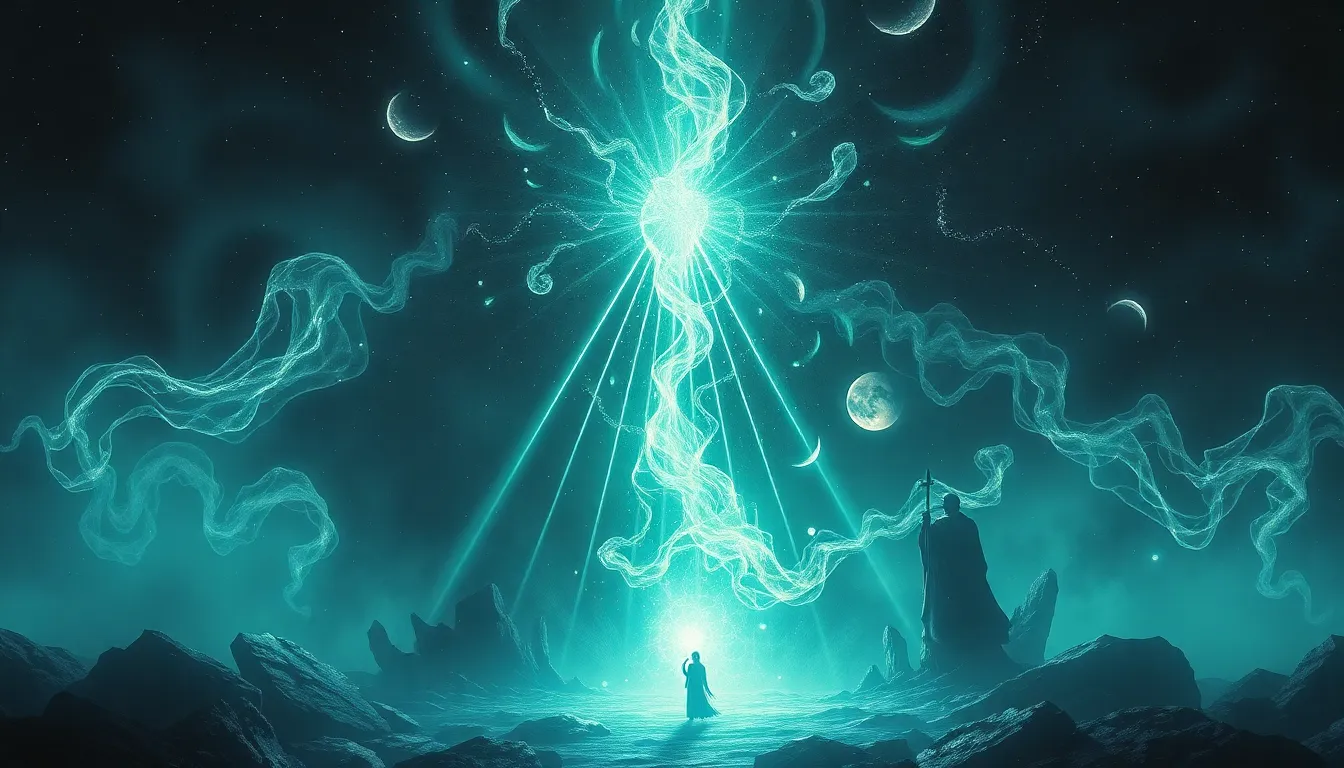The Rusalka’s Transformation: Exploring the Fluidity and Shifting Nature of Water Spirits
I. Introduction
The Rusalka, a captivating entity from Slavic mythology, embodies the mystique and peril of water spirits. Traditionally depicted as beautiful maidens, Rusalki are often associated with bodies of water such as rivers, lakes, and streams. Their significance in folklore extends beyond mere beauty; they symbolize the complex relationship humans have with nature and the emotional currents of life.
Water spirits have appeared throughout various cultures, each bearing unique attributes, yet sharing common themes of transformation, seduction, and tragedy. This article aims to delve into the Rusalka’s transformation, exploring how this figure represents the fluidity of identity and the shifting nature of existence.
II. Historical Context of the Rusalka
The origins of the Rusalka can be traced back to ancient Slavic beliefs, where water was revered and feared. Rusalki were thought to be the souls of young women who died prematurely, often due to drowning or other tragic circumstances. Over the centuries, the figure of the Rusalka evolved, influenced by changing societal norms and the rise of Christianity, which often demonized these once-sacred entities.
When comparing the Rusalka to other water spirits, such as the Greek Naiads or the European Mermaids, one can see both similarities and distinct differences:
- Naiads: Generally benevolent, associated with freshwater, and often depicted as nurturing figures.
- Mermaids: Often portrayed as seductresses, embodying the duality of allure and danger in the sea.
- Rusalki: Complex figures that oscillate between nurturing and destructive, often reflecting societal fears of femininity and loss.
III. The Symbolism of Water in Folklore
Water, as a vital resource, has always been a powerful symbol in folklore. It represents transformation and change, capable of nurturing life or wreaking havoc. The dual nature of water is evident in many stories:
- Nurturing: Water sustains life, providing nourishment for plants, animals, and humans alike.
- Destructive: Floods and storms illustrate water’s capacity to destroy, reflecting the unpredictability of nature.
In various traditions, water holds significant spiritual meaning, often viewed as a purifying element, a source of rebirth, or a pathway to the divine. This symbolism is crucial in understanding the Rusalka’s narrative, representing both the beauty and peril of existence.
IV. The Transformation of the Rusalka
The transformation of the Rusalka from maiden to spirit is marked by several poignant stages:
- Life: The Rusalka begins as a vibrant young woman, often embodying idealized beauty and innocence.
- Tragedy: A pivotal event, such as a betrayal or premature death, leads to her transformation into a spirit.
- Spirithood: As a Rusalka, she exists in a liminal state, haunting the waters and embodying both longing and despair.
This transformation is heavily influenced by societal views on femininity and identity. The Rusalka’s narrative often reflects a commentary on the roles of women, particularly in relation to love, loss, and autonomy. The tragedy associated with the Rusalka serves as a poignant reminder of the consequences of societal expectations and the repression of female identity.
V. The Rusalka in Literature and Art
Throughout history, the Rusalka has been a compelling subject in literature and art, representing the complexities of human emotions and relationships. Some notable representations include:
- Classic Literature: In works such as Alexander Pushkin’s “Rusalka,” the tale of a water nymph who faces the hardships of unrequited love is explored.
- Artistic Interpretations: Visual artists have portrayed Rusalki in various forms, often highlighting their ethereal beauty and tragic fates.
- Modern Adaptations: Contemporary works continue to explore the Rusalka motif, reflecting current issues such as environmental concerns and feminist themes.
VI. Comparative Analysis of Water Spirits
When examining the Rusalka alongside other water spirits, several similarities and differences emerge:
- Similarities: All water spirits often embody the dualities of attraction and danger, reflecting the innate human connection to water.
- Differences: Cultural contexts shape the narratives; for example, the Rusalka’s transformation is often marked by tragedy, while Naiads may be depicted more benignly.
The geographical and cultural contexts also influence how these spirits interact with their ecosystems, often acting as guardians or harbingers of the health of their respective waters.
VII. The Rusalka’s Relevance in Contemporary Society
In recent years, there has been a resurgence of interest in folklore and mythology, with the Rusalka emerging as a potent symbol in contemporary discourse:
- Environmental Awareness: As climate change and pollution threaten water bodies, the Rusalka serves as a reminder of the fragility of nature.
- Empowerment Narratives: Modern interpretations of the Rusalka reclaim her identity, portraying her as a figure of strength and resilience rather than mere tragedy.
Through these contemporary lenses, the Rusalka embodies the call for environmental conservation and the reclamation of feminine power, reflecting broader societal shifts in understanding identity and nature.
VIII. Conclusion
In conclusion, the transformation of the Rusalka illustrates the profound significance of water spirits in folklore and their ongoing evolution in modern culture. The Rusalka’s journey from maiden to spirit encapsulates themes of loss, identity, and the fluidity of existence. As we navigate our own identities in an ever-changing world, embracing the lessons of the Rusalka reminds us of the importance of adaptability and resilience.
Ultimately, the legacy of water spirits like the Rusalka teaches us to respect the dual nature of water and the complexities of life, urging us to honor both our connections to nature and the depth of our emotional experiences.



